
 History
HistorySIPL has been a pioneer laboratory in signal processing research since its inception in 1975. Starting with limited computing power, the lab grew alongside advancements in hardware and software, venturing into real-time processing, image and video processing, and eventually machine and deep learning. Through graduate research, undergraduate projects, and experimental courses, SIPL has nurtured future signal processing leaders and fostered industry collaboration, leaving a lasting impact on the field.
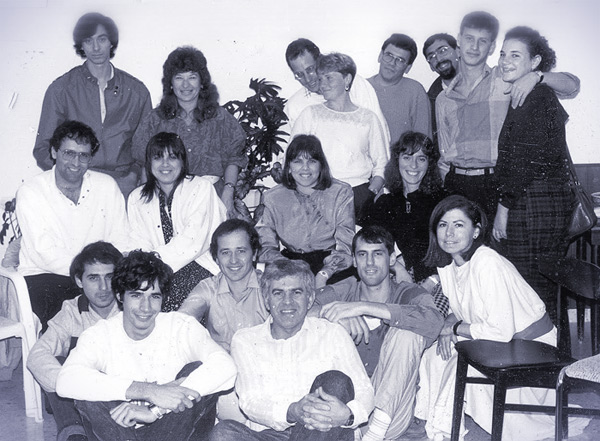 The 1970s witnessed the rapid advancement of computers and minicomputers, which played a crucial role in elevating digital signal processing (DSP) into a prominent technological field. At the Technion, the establishment of the Signal Processing Lab in 1975 marked a significant turning point. This led to a surge in research, development, and implementation of DSP algorithms.
The 1970s witnessed the rapid advancement of computers and minicomputers, which played a crucial role in elevating digital signal processing (DSP) into a prominent technological field. At the Technion, the establishment of the Signal Processing Lab in 1975 marked a significant turning point. This led to a surge in research, development, and implementation of DSP algorithms.
Initially, the lab’s computational resources were limited to a Data-General Nova-2 minicomputer with 64K words of memory and a scant 10 MB removable disk. This meagre setup barely allowed for processing even short segments of speech signals. Therefore, the lab also focused on implementing fundamental DSP algorithms using dedicated hardware.
A few years later, the acquisition of a Data-General Eclipse system equipped with 256K memory, a fast array processor, and a 200 MB disk significantly enhanced the lab’s capabilities. This upgraded infrastructure paved the way for developing and processing more complex speech processing algorithms, including:
While computer-based algorithm development remained a core activity, the lab also ventured into real-time signal processing. This initiative initially relied on dedicated hardware implementations but later transitioned to Digital Signal Processors (DSPs). The lab adopted Intel’s 2920 microprocessor in 1979, and later Intel’s 8080 family. Subsequently, it embraced generations of DSPs from other leading manufacturers including Texas Instruments (TMS320 family), Motorola (DSP56000/96000), and Analog Devices (ADSP-21 family).
The lab’s commitment to innovation was further bolstered by its participation in Texas Instruments’ prestigious Elite program from 1995 to 2015 and the Distinguished University Program from 2011 to 2015, incorporating European universities. This collaboration provided early access to cutting-edge DSP chips and facilitated joint advanced DSP projects, significantly accelerating the lab’s advancements in real-time signal processing.
As computational power surged, the lab strategically shifted its focus towards software-based DSP solutions. This transition unlocked greater flexibility, portability, and scalability, enabling wider applicability of developed algorithms. While dedicated hardware implementations remained crucial for specific high-performance applications, software-centric DSP became the dominant paradigm.
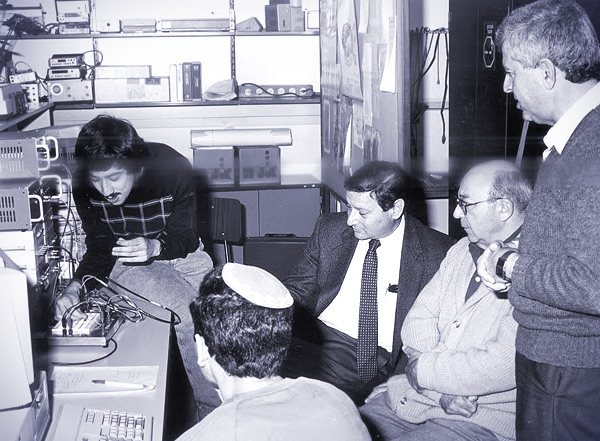 The mid-80s proved pivotal for SIPL, marked by a generous $200,000 donation from Tadiran, a leading communication company. This enabled the acquisition of a DEC VAX-2 computer and a Gould image processing system, propelling the lab into the realm of image and video processing. With a strong emphasis on coding, this new avenue led to the lab’s official name change to the Signal and Image Processing Lab (SIPL).
The mid-80s proved pivotal for SIPL, marked by a generous $200,000 donation from Tadiran, a leading communication company. This enabled the acquisition of a DEC VAX-2 computer and a Gould image processing system, propelling the lab into the realm of image and video processing. With a strong emphasis on coding, this new avenue led to the lab’s official name change to the Signal and Image Processing Lab (SIPL).
The dawn of the 90s ushered in a new era of computing power with the arrival of workstations. Initially, SIPL adopted Digital Equipment Corporation (DEC) workstations, later transitioning to Silicon Graphics machines. These powerful platforms significantly increased research efficiency for graduate students, eliminating the need for shift-based work on single systems.
Fast forward to the early 2010s, and the lab’s focus mirrored the global trend towards machine and deep learning. This shift led to the lab being equipped with a large variety of NVIDIA GPU processors, from the GTX-1080 to the RTX-A5000/A6000.
SIPL faculty is supervising graduate students towards M.Sc. and Ph.D. degrees in a diverse range of signal processing topics and applications (details can be found in the individual home pages). Part of the research works of students in the lab were performed in collaboration and funding by industry and government, including consortia of industry and academy, mostly funded by the Israeli Innovation Authority. More details on consortia activity through the years can be found here.
Leveraging the lab’s advanced computational facilities and specialized equipment, students gain invaluable hands-on experience while embarking on their thesis research. By 2023, over 170 students graduated since the lab’s inception, many of whom have gone on to impactful careers in academia and industry, both in Israel and internationally.
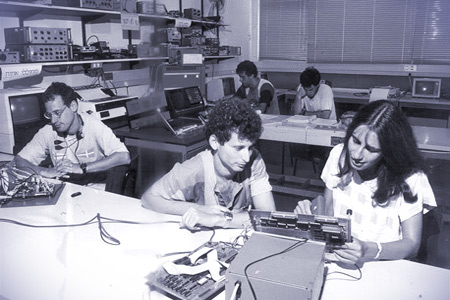 Since the mid-80s, SIPL has fostered a thriving culture of senior undergraduate research projects, seamlessly integrated into the department’s engineering curriculum. Pioneering collaborations with science-based companies in Israel, SIPL provides valuable real-world training for students while staying at the forefront of technological advancements. This successful program has seen over 1,250 projects completed by the end of 2023 (often by pairs of students), solidifying SIPL’s dedication to nurturing the next generation of engineers.
Since the mid-80s, SIPL has fostered a thriving culture of senior undergraduate research projects, seamlessly integrated into the department’s engineering curriculum. Pioneering collaborations with science-based companies in Israel, SIPL provides valuable real-world training for students while staying at the forefront of technological advancements. This successful program has seen over 1,250 projects completed by the end of 2023 (often by pairs of students), solidifying SIPL’s dedication to nurturing the next generation of engineers.
In the early 90s, the Department of Electrical and Computer Engineering (EE at the time) established a distinguished project competition. Since 1994, this competition in named in honor of the late Yehoraz Kasher. SIPL participates this competition every year, and its students have consistently garnered numerous awards over the years.
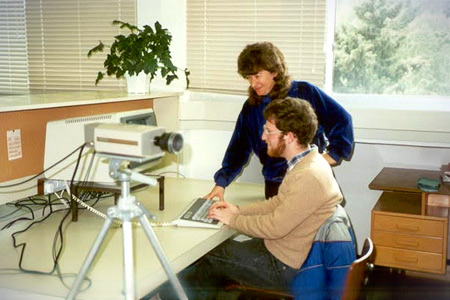 Beyond project-based learning, SIPL complements its undergraduate offerings with a set of hands-on experimental lab courses. These are elective experiments that are part of the department curriculum and help to prepare the students for projects in the lab.
Beyond project-based learning, SIPL complements its undergraduate offerings with a set of hands-on experimental lab courses. These are elective experiments that are part of the department curriculum and help to prepare the students for projects in the lab.
For many years SIPL had lab experiments in a wide field of signal and image processing: Speech Processing (pitch detection, LPC-based coding, etc.), Image and Video Compression (lossy and lossless coding: from JPEG to MPEG), Real-time Signal Processing (based on TI DSP TMS320c55) and Deep Learning (for computer vision application).
Since 2024, the format of lab experiments in ECE changed and we moved to a new structure of lab courses.
There are 3 lab courses in which SIPL is involved in:
See more details about SIPL’s lab courses.
Since 1991, the lab is holding an annual event. This open forum allows undergraduate and graduate students to showcase their projects and research to a diverse audience, encompassing fellow students, faculty, technical staff, and industry collaborators. This event fosters a stimulating exchange of ideas, igniting intellectual curiosity and collaborative opportunities. In the year 2000 the lab celebrated 25 years since its establishment in a special event.
To recognize outstanding undergraduate projects achievements, SIPL presents laboratory awards to these students. Lists of awards and awardees are displayed on the lab’s website.
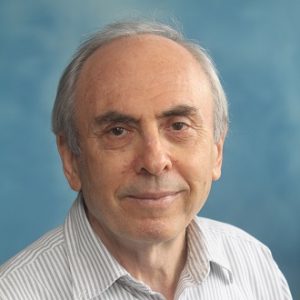 In 1975 he co-established the Signal and Image Processing Laboratory (SIPL), at the Technion, and has since served as its academic head. The lab is active in research and education in a wide range of signal processing topics, including processing of speech, audio, image, video, physiological signals, hyperspectral images, 3D point clouds processing, computer vision, machine earning, deep neural networks, and more.
In 1975 he co-established the Signal and Image Processing Laboratory (SIPL), at the Technion, and has since served as its academic head. The lab is active in research and education in a wide range of signal processing topics, including processing of speech, audio, image, video, physiological signals, hyperspectral images, 3D point clouds processing, computer vision, machine earning, deep neural networks, and more.
He became a Fellow of the IEEE in 1987 for the development of Time-Domain Harmonic Scaling and its applications, and since 2009 he is a Life Fellow of the IEEE.
His main research interests are in Image, Video, Speech and Audio Coding; Speech and Image Enhancement; Text to Speech Synthesis; Hyperspectral Image Analysis; Data Embedding in Signals, 3D Point Cloud Processing, and in Digital Signal Processing Techniques. So far he supervised 86 M.Sc. and Ph.D. students in the lab.
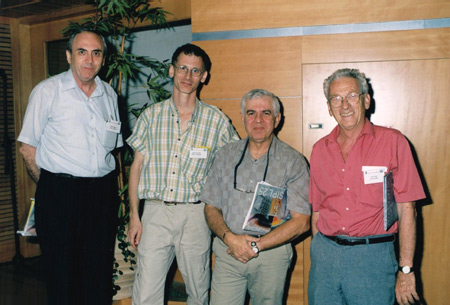
Left to right: Prof. David Malah, Nimrod Peleg, Yoram Or-Chen, Eli Pollak (2000)
The Signal Processing Laboratory was established in 1975 on the basis of an existing laboratory – the Electronic Instrumentation Laboratory, which dealt with Analog Electronic Instrumentation under the leadership of Professor Itzhak Kidron. Professor Kidron was one of the founders of the Microelectronics Center at that time and transferred all his activities to this field. The lab engineer, Eli Polack, stayed in the new lab, but since he was an engineer in the Analog field and the laboratory was now working in digital signal processing, he preferred to leave the lab after two years. He was replaced in 1978 by Yoram Or-Chen, who specialized in the digital systems field and had previously worked in the Digital Systems laboratory in the faculty. His joining greatly advanced the laboratory, both in terms of hardware implementation for real-time signal processing and in computing.
In parallel to supporting the research of graduate students, who were guided by Professor David Malah, Yoram initiated projects for undergraduate students. These were initially funded by the faculty and later, in the late 80’s, by companies from the local hi-tech industry, which was beginning to develop in Israel at the time. The laboratory was a pioneer within the faculty, establishing connections with the industry through undergraduate student projects that were at the forefront of knowledge. These connections enhanced the engineering training of the students. They also allowed the industry to explore the feasibility of various solutions in the laboratory. Some solutions were proposed by the lab’s mentoring team, which included graduate students conducting research in the lab. Other proposals came directly from the students themselves. This close connection with the industry continues to this day. The laboratory remains a leader within the faculty in terms of the number of projects conducted in collaboration with the industry, benefiting both parties.
Yoram left the lab in 1993 for a managerial position in the faculty but has remained closely connected to it since then. He was replaced as Chief Engineer by Nimrod Peleg, who joined the lab in 1986 as an application engineer. Nimrod further expanded the scope of undergraduate projects and the connection with industry, leading the lab to national and international recognition through participation and winning prestigious places in challenging international competitions, as well as encouraging undergraduate students to submit papers resulting from innovative projects to international conferences. The list of project awards in competitions and accepted student papers can be found on the lab’s website.